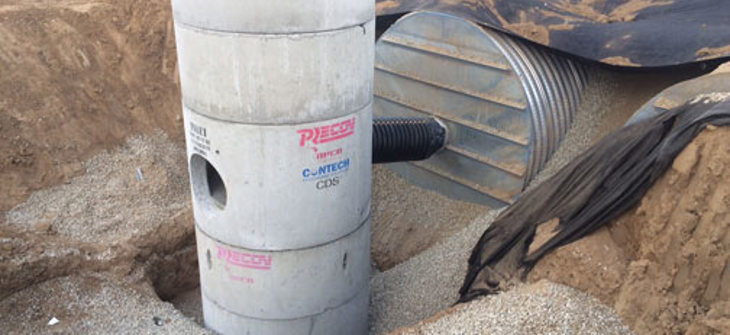
Why Pretreat Your Stormwater Infiltration System?
Proper maintenance is hands-down the most important factor in the sustainability of any infiltration system. By their very nature, infiltration systems are difficult to inspect and maintain. The selection of a cost-effective and easy-to-access pretreatment system can mean a huge difference in maintenance expenses for years to come.
As site conditions can prove to be unpredictable, it is in the design engineer's best interest to provide an aggressive pretreatment practice prior to infiltrating the water quality flow or greater flow events. Unforeseen upstream construction, erosion, annual tree debris, and winter maintenance treatments can quickly occlude infiltration facilities, putting them at risk for hydraulic failure and reducing water quality benefits.
Infiltration Pretreatment Design Options
Numerous pretreatment design options are available to accommodate the sediment loading, ranging from land-based options such as forebays and grass channels to manufactured treatment systems such as hydrodynamic separators. Incorporating pretreatment extends the lifecycle of the infiltration system and eliminates the need for frequent maintenance.
However, the effectiveness the pretreatment design options vary greatly, as does their ability to be easily inspected and maintained. What is the smallest size particle the pretreatment system is designed to capture? How susceptible is the pretreatment system to clogging? What is the maintenance cycle of the pretreatment system? How easy is it to inspect and maintain the system? If cleaning needs to take place can it be done with a vacuum truck or is special equipment required? Design engineers should ask all these questions when selecting a pretreatment system.
Another important safety factor to consider prolonging the life of the facility is sizing the infiltration system with a conservative infiltration rate; the design infiltration rate should be based on the assumption that the system has some level of occlusion. This will ensure the system will function as intended even after the accumulation of sediment has started to reduce the original percolation rate.
Best Maintenance Practices
Best maintenance practices include inspection of the pretreatment and infiltration systems on a routine basis to determine when cleaning is needed. In many cases, this includes inspection after heavy storms to evaluate sediment accumulation in the pretreatment system and drain down time of the infiltration system. Cleaning is needed when sediment accumulation or drain down time falls outside of acceptable levels.
